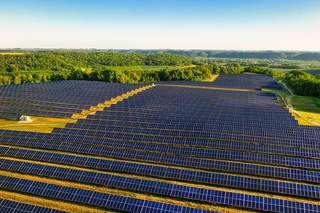
© Pexels/Tom Fisk
EU electricity market reform: Fit for net zero?
"For over two decades, the electricity market design has served European companies and consumers well, letting them enjoy the benefits of a single market”, said EU Energy Commissioner Kadri Simson when presenting the reform proposal in March 2023. In fact, the liberalised internal electricity market has brought remarkable cost savings of around €34 billion to EU citizens in 2021 alone. However, the energy crisis triggered by Russia's attack on Ukraine revealed several shortcomings within the current system, which the Commission aims at ironing out with its current proposal. The electricity market reform is intended to accelerate the expansion of renewable energies, to better protect households and companies from price fluctuations, price spikes and market manipulation, and to strengthen consumers' rights.
The Commission abstains from tearing down the foundations of the existing market design, especially the principles of "merit order" and of “marginal pricing” – and rightly so. After all, the record wholesale price peaks last year were due to energy supply shortages following Russia´s supply cuts rather than the EU market design itself.
More renewables for affordable energy, security of supply and a competitive industry
To meet the EU´s climate targets, renewable energy must triple by 2030. Massive and prompt investments in their expansion are therefore crucial for a successful climate and energy transition. Consequently, the electricity market reform proposal aims at reducing the share of fossil fuels in electricity generation. Consumers should directly benefit from the lower costs of renewable energies. Long-term contracts with fixed prices for non-fossil energy generation and measures that enable flexible solutions, such as demand response or energy storage, are promoted.
On the one hand, long-term contracts, such as power purchase agreements (PPAs), are to ensure stable revenues for electricity producers and create incentives for investments in renewable energies. On the other hand, PPAs should also better protect the industry from price fluctuations and make it less price-prone.
Should Member States want to support new investments in low-carbon and renewable electricity generation through state aid, this would have to take the form of two-sided contracts for differences. Income from such contracts would have to be redistributed to end consumers in order to reduce electricity bills. Thereby, prices for electricity producers should be further stabilised and consumers should benefit more directly from cheaper renewable energies.
Industry generally welcomes the emphasis placed on strengthening the role of longer-term supply contracts (PPAs) and bilateral contracts for differences to better contain price volatility and incentivise investment in clean technologies. However, such contracts must remain voluntary and be designed in a way that also allows medium-sized companies to use them.
More consumer protection and consumer empowerment
A broader variety of electricity contracts should better protect consumers. Consumers would be given more choice and be allowed to conclude both, longer-term fixed-price contracts and higher risk contracts based on dynamic pricing. Consequently, consumers would also have the right to multiple electricity meters. In addition, consumers would also be allowed to share energy and, for example, to sell self-generated, renewable surplus electricity totheir neighbours.
The Commission´s proposal also provides for the expansion of non-fossil flexibility instruments, such as demand response or storage. From 2025 onwards, member states would have to prepare reports on the flexibility needs of their electricity system every two years and set corresponding indicative national targets. Member states may also introduce new support schemes for demand response and storage.
Outlook: Europe must become even more attractive as a location for innovation and industry
It is positive that the Commission is building its reform on the proven foundations of EU electricity market regulation – being the marginal cost pricing and merit order. Thereby, it continues to ensure that cheaper, renewable energies are used first to meet consumer demand and that cross-border electricity trade between the member states is stimulated in times of crisis. This reinforces both, climate protection and Europe´s energy sovereignty.
However, considering Europe´s strategic resilience and its industrial value chains, EU policy must provide the necessary framework conditions for industry to remain internationally competitive. Competitive electricity prices from essential part of such framework conditions for industry Action is needed to make Europe more attractive as a strategic and global innovation and industry location.
The proposed electricity market reform does not represent an emergency measure but will be negotiated bythe European Parliament and the Council under ordinary procedure. An agreement is due for the autumn, therefore ahead of the next heating season.



